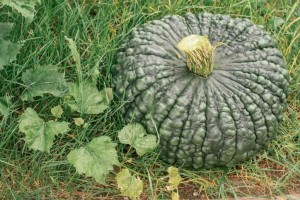Pumpkin season is upon us. You’ll see them everywhere: grocery stores, farmer’s markets, and hardware stores. My neighbor sets up a really fun and surprisingly lovely pumpkin display on her porch of the oddball pale green and blue ones with the strange lumps and bumps. We’re buying them to carve, to make into pies or roast the seeds, and to decorate. Let’s dive into the many different types of pumpkins.
Starting simply, pumpkins are a fruit. They belong to the Cucurbitaceae, or cucurbits for short, family. Cucurbits include 960 different species of plants, including melons and cucumbers, and all 150 species of pumpkins.
Within that group of cucurbits are four sub-groups of pumpkins: Pepo, Moschata, Maxima, and Mixta. You may not know the words, but I bet you’ve seen the pumpkins. Pepo are orange and green and are used for cooking and carving, small to medium in size. Moschata are tan and yellow and are used for cooking and carving, medium in size. Maxima are orange, blue, and blue-green, and are used for cooking and carving, small to large in size. Mixta are multi-color, orange, blue, and red, and are used for some cooking and mostly decorating, small to medium in size. Each of the four sub-groups contains many varieties (cultivars) of pumpkins.
Pepo pumpkins are the pumpkins you likely think about when you hear the word “pumpkin.” It’s the classic pumpkin: bright orange, thick rinds, and stiff stems.

Connecticut Field Pepo Pumpkins
Moschata pumpkins are oblong (think: squash-like) or squat, and usually tan.

Long Island Cheese Moschata Pumpkin
Maxima pumpkins include the ones that win fairs for being enormous. Their stems are softer, and they seem to be, for the most part, brighter than Pepo. Fun fact: the weight record for a Dill’s Atlantic Giant Maxima type pumpkin is 2,323.70 pounds!

Atlantic Giant Maxima Pumpkin
Mixta is a bit unusual; they look more like squash and are available from orange to blue colors. Although you can eat them, they are super for decorating as they are so unusual and pretty.

Cushaw Mixta Pumpkin
Handy Pumpkin Terms:
- Skin or Rind: outer layer of the fruit
- Flesh: interior of the fruit
- Color: the tone of the skin or the flesh
- Texture: the feel of the skin and also the creaminess of the cooked flesh
- Ribs: the up and down ridges on the surface of the fruit.
- Handle: the stem
- Keeper: fruit with good storage qualities
- Carve-ability: how easy it is to cut decoratively using a knife or carving kit
- Heirlooms: varieties with seeds you can grow for the same type of plant
- F1 or Hybrid: the variety is a cross of different plants, and seeds don’t grow out true (will revert to a mother plant variety)
Here are some wonderful pumpkin options that would be fun to decorate with this season. Remember my neighbor who I mentioned earlier? She found pumpkins that are gnarled into swan-like shapes and made a Swan Lake ballet scene on her porch. I’m serious. Watch out, Martha Stewart; my neighbor is coming for you. You may not go to those extraordinary lengths, but it’s still fun to decorate for the season with these unusual and usual looking pumpkins. Have fun with it!

Baby Pam Pumpkins

Caspar Pumpkins

Cinderella Pumpkin

Galeux d’Eysines Pumpkins

Gladiator F1 Pumpkins

Japanese Black Pumpkins

Jarrahdale Pumpkins

Marina DiChioggia Pumpkin

Knucklehead Pumpkins

0